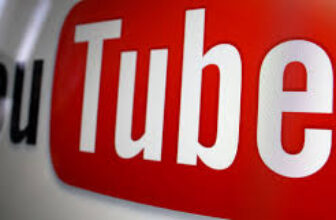
Why don’t freeways have streetlights?
Freeways, often devoid of LED streetlights, pose an interesting question: Why don’t they have streetlights? The answer is multifaceted, involving safety, cost, environmental concerns, and advancements in lighting technology. To fully grasp this, it’s essential to understand the broader implications of light pollution, particularly blue light emissions, and how reducing these emissions of outdoor LED chip can benefit both human and ecological health.

led-2835-amber
Environmental Impact and Light Pollution
A critical aspect of freeway lighting, or the lack thereof, is its impact on the environment. Artificial lighting contributes to light pollution, which has adverse effects on nocturnal wildlife, disrupting natural behaviors such as migration, foraging, and reproduction. Additionally, light pollution affects human health by disturbing circadian rhythms and reducing the quality of sleep.
Blue light, in particular, is a significant concern. High-intensity blue light can scatter in the atmosphere, contributing to skyglow—a brightening of the night sky over populated areas that obscures the stars. This not only impacts astronomical observations but also affects the ecological balance. For instance, many nocturnal animals rely on the darkness of night to navigate, hunt, and avoid predators. Excessive blue light can disrupt these natural processes, leading to ecological imbalance.

Safety and Cost Considerations
Freeways are designed for high-speed travel, with controlled access points and limited pedestrian activity. Unlike city streets, the primary goal is to maintain smooth traffic flow at high speeds. Streetlights on freeways can be more of a distraction than a benefit, potentially causing glare and visual discomfort for drivers. The high speeds at which vehicles travel on freeways also mean that headlights provide adequate illumination for safe driving.
From a cost perspective, installing and maintaining streetlights on extensive stretches of freeway is prohibitively expensive. The initial installation requires significant investment, and ongoing maintenance, including energy consumption, adds to the financial burden. In contrast, the use of vehicle headlights places the responsibility of illumination on individual drivers, reducing public expenditure.
Advancements in LED Technology
Ledestar, a LED chip company and have develop complete LED solution for different lighting application including outdoor lighting. Among them, not only provide high cost effective high lumen outdoor LEDs, but also environment friendly Amber LED for nightsky. It can meet the needs of high lumen as well as environmental protection plans. Now are available in LED package 2835 LED,3030 LED,5050 LED.
One of the critical strategies in modern lighting design is to minimize blue light emissions to less than 2%. This reduction can significantly protect the night sky ecology by minimizing light pollution. By adopting such low-blue light LEDs, it’s possible to maintain adequate illumination for necessary applications while mitigating the adverse effects on the environment and human health.
Balancing Human Needs and Ecological Protection
Balancing the need for artificial lighting with the protection of the night sky and ecological health is a complex challenge. For freeways, the decision to forego streetlights aligns with both economic and environmental considerations. It minimizes light pollution, reduces costs, and aligns with safety principles designed for high-speed travel.
In urban and suburban areas where street lighting is necessary for safety and security, adopting low-blue light LEDs can offer a compromise. These LEDs can provide the needed illumination while reducing the impact on nocturnal wildlife and preserving the natural night sky. Implementing smart lighting solutions, such as dimmable and motion-activated lights, can further enhance the effectiveness of these efforts.
The absence of streetlights on freeways is a deliberate choice driven by safety, cost, and environmental considerations. As we continue to understand the impacts of artificial lighting on our environment, particularly the role of blue light, it becomes evident that reducing blue light emissions is crucial. By focusing on advancements in LED technology and adopting lighting practices that protect the night sky ecology, we can achieve a balance that benefits both humans and the natural world.
Reducing blue light emissions to less than 2% is a pivotal step in this direction. It helps minimize light pollution, protecting nocturnal wildlife and preserving the night sky for astronomical observations. As we move forward, integrating these principles into our lighting infrastructure will be essential in fostering a sustainable and ecologically balanced future.







